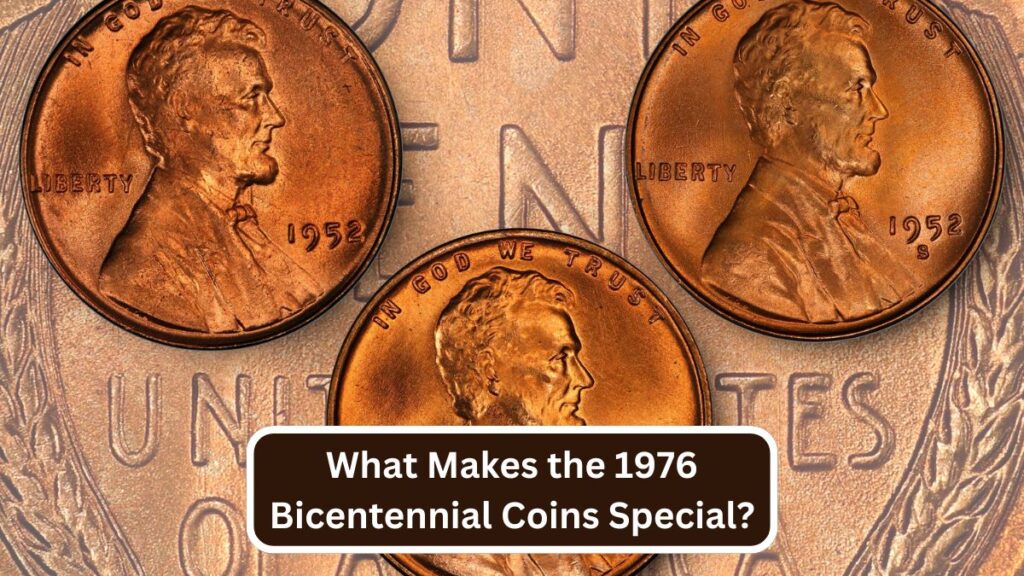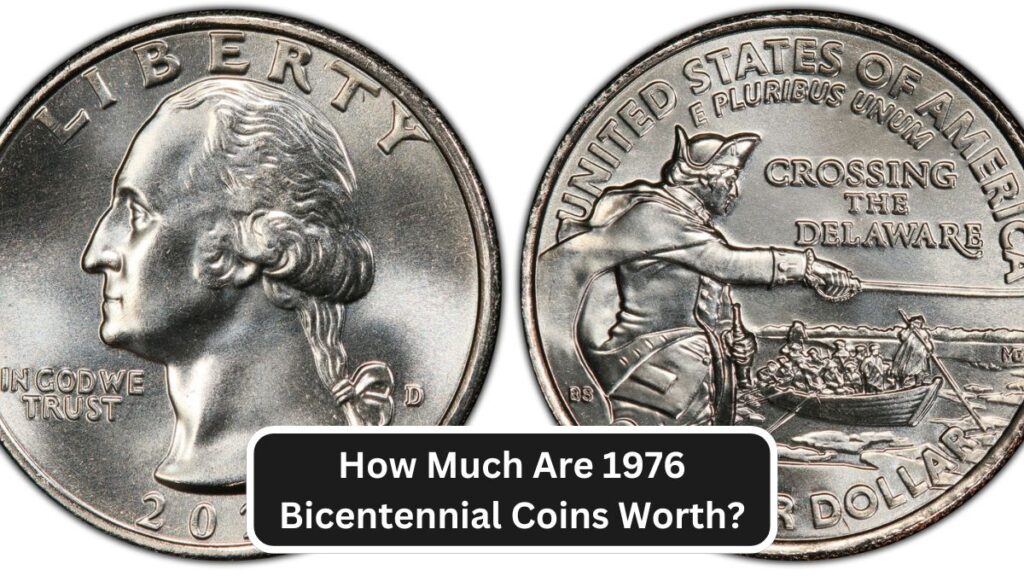The 1976 Bicentennial Coins are more than just a piece of history—they have a surprising value for collectors today. These coins were made to celebrate the 200th anniversary of the United States’ independence. However, many people don’t realize that some of these coins could be worth a lot more than their face value. In this article, we’ll break down what makes these coins special, how to identify valuable ones, and how much they can be worth today.
What Makes the 1976 Bicentennial Coins Special?

The 1976 Bicentennial Coins were issued to celebrate the U.S. Bicentennial (the 200th anniversary of American independence). There are several types of these coins: the quarter, half dollar, and dollar. These coins are unique because of their designs, which were created for the special occasion.
The design on the quarter features a drummer from the American Revolution on the back, while the half dollar has the Liberty Bell and the moon. The dollar coin also features the Liberty Bell, which is a symbol of freedom in the United States.
The Value of 1976 Bicentennial Coins
While these coins were made for the celebration, they can be worth more than you think. Many of the coins that were released into circulation are not worth much more than their face value (25 cents, 50 cents, or $1). However, some coins have special qualities that make them more valuable.
- Silver Content: Some of the Bicentennial coins, such as the half dollar, were made of 40% silver. These coins can be worth more for their silver content, which makes them popular among collectors and investors.
- Mint Errors: If a coin has a mistake in its design or minting process, it can become very valuable. Coins with errors such as double strikes, misprints, or off-center designs are especially sought after by collectors.
- Uncirculated Condition: Coins that have not been used in everyday transactions and are in perfect condition can be worth significantly more. The rarer the uncirculated coin, the higher its value.
Identifying Valuable 1976 Bicentennial Coins

To find out if your 1976 Bicentennial Coin is valuable, check for these factors:
- Condition: Is the coin in good shape? Coins in mint or near-mint condition are always worth more.
- Silver Content: The 1976 half dollar was made with 40% silver. If your coin is made of silver, it’s worth more than a coin that’s just made of copper-nickel.
- Errors: Look closely for any errors in the coin’s design, such as misprints or off-center strikes.
| Coin Type | Design Features | Metal Content | Average Value (Circulated) | Average Value (Uncirculated/Proof) | Factors Affecting Value |
|---|---|---|---|---|---|
| Quarter | Features the Liberty Bell and 13 stars | Copper-nickel (no silver) | 25 cents | $1 to $3 | Condition, Proof quality, Mint errors |
| Half Dollar | Features the Liberty Bell and a Revolutionary War drummer | 40% Silver | 50 cents | $2 to $5 | Condition, Silver content, Mint errors |
| Dollar Coin | Features Independence Hall and the Liberty Bell | Copper-nickel (no silver) | $1 | $3 to $8 | Condition, Proof quality, Mint errors |
| Proof Coins | High-quality finish, special minting for collectors | Varies (usually Copper-Nickel or Silver) | Varies | $1 to $8 | Proof quality, Condition, Rare minting variations |
| Error Coins | Mistakes in design, striking, or engraving | Varies (depends on coin) | Higher than regular value | Higher than regular value | Mint errors (e.g., double strike, off-center) |
How Much Are 1976 Bicentennial Coins Worth?

The value of these coins can vary, but here are some general price ranges:
- Bicentennial Quarters: If your quarter is in average circulation condition, it’s worth about 25 cents. However, ungraded or proof versions can go for around $1 to $3. Coins with special errors or in excellent condition may be worth even more.
- Bicentennial Half Dollar: The half dollar, made of 40% silver, can be worth more than face value. Average circulated coins can go for around $2 to $5, while those in mint condition or with errors can be worth much more. If the coin is made of silver, it could be worth closer to $6 or more.
- Bicentennial Dollar Coin: The dollar coin, made of copper-nickel, typically holds a face value of $1. But if it is in mint condition or has an error, it could be worth around $3 to $8 or more.
Why Should You Keep an Eye on Your 1976 Bicentennial Coins?
1976 Bicentennial Coins are not just interesting pieces of history; they also have the potential to be a profitable part of your collection. If you’re lucky enough to find one with a special feature, like an error or in perfect condition, you could be holding onto a coin worth much more than you think.
These coins continue to be sought after by collectors, and with the right knowledge, you can easily spot those that are more valuable than others. Whether you’re just starting your coin collection or you’re already an experienced collector, the 1976 Bicentennial Coins are an exciting and valuable addition to any collection.
FAQs
What makes 1976 Bicentennial coins special?
1976 Bicentennial coins were issued to celebrate the 200th anniversary of the United States’ independence. They have unique designs, featuring symbols like the Liberty Bell, a drummer from the American Revolution, and a moon landing scene, making them stand out from regular U.S. coins.
Are all 1976 Bicentennial coins worth more than face value?
Not all 1976 Bicentennial coins are worth more than their face value. Most of the coins are still worth their original face value, like 25 cents, 50 cents, or $1. However, certain factors like their condition, metal content (silver), and mint errors can increase their value.
How can I tell if my 1976 Bicentennial coin is worth more?
To know if your 1976 Bicentennial coin is valuable, check its condition, metal content, and whether it has any mint errors. Coins in perfect condition or those made from 40% silver, like the half dollar, are worth more. Coins with misprints or errors (like double strikes) are highly valuable.
Which 1976 Bicentennial coin is the most valuable?
The half dollar coin, which is made of 40% silver, can be more valuable than other Bicentennial coins, especially if it is in excellent condition or has rare mint errors. Uncirculated coins and error coins are typically worth more than regular, circulated ones.
How do I identify if a 1976 Bicentennial coin has a mint error?
Mint errors include misprints, off-center strikes, double strikes, or incorrect engravings. To identify a mint error, carefully examine your coin under good lighting and compare it to standard versions. If it looks different from regular coins, it could be an error coin, which is highly valuable.
The 1976 Bicentennial Coins are more than just regular U.S. currency; they are a part of American history with surprising value today. Whether you’re looking for silver content, rare mint errors, or just want to hold onto a piece of the U.S. Bicentennial, these coins are worth taking a closer look at. If you find one in good condition or with a minting mistake, you may be sitting on a valuable collector’s item that could be worth a lot more than its face value.













